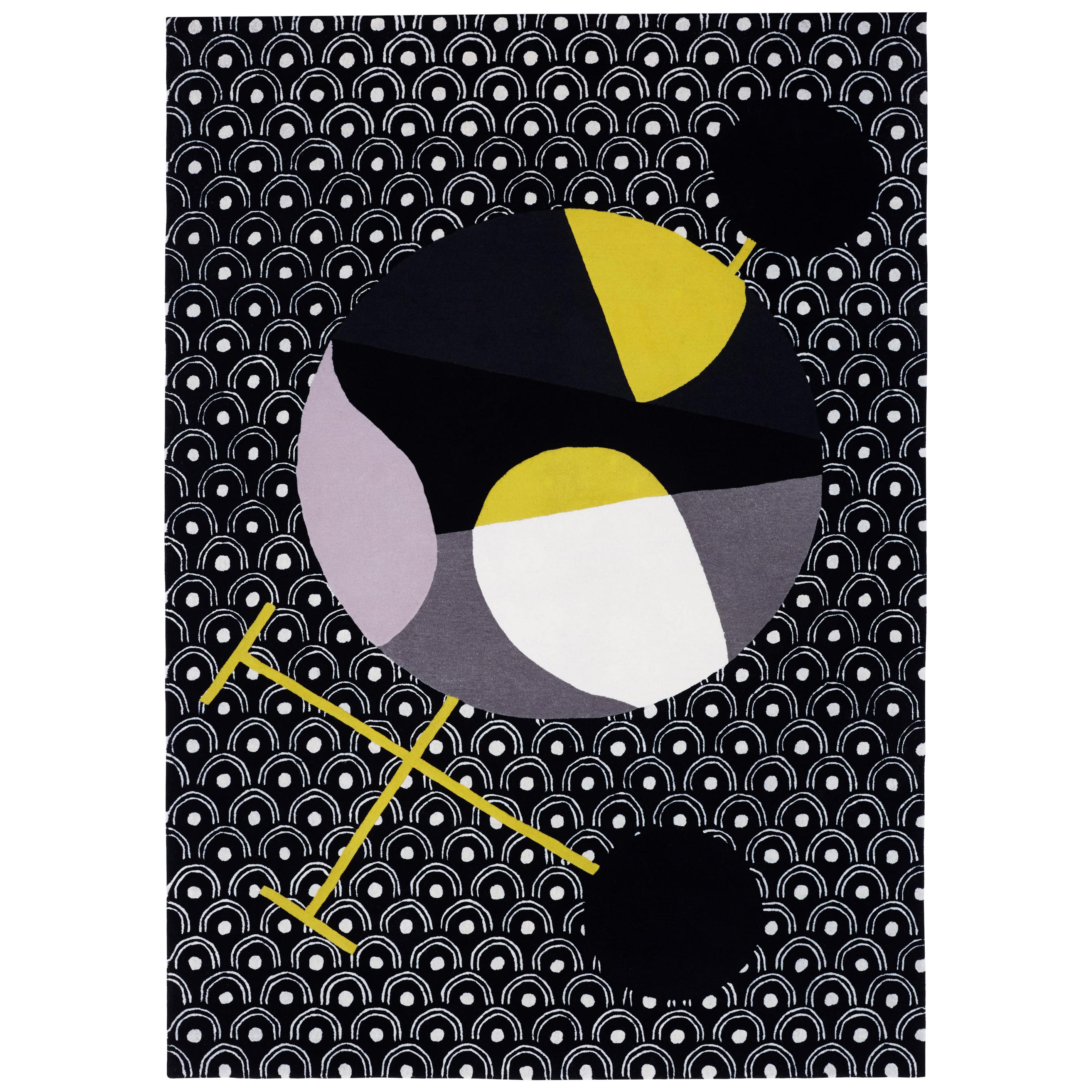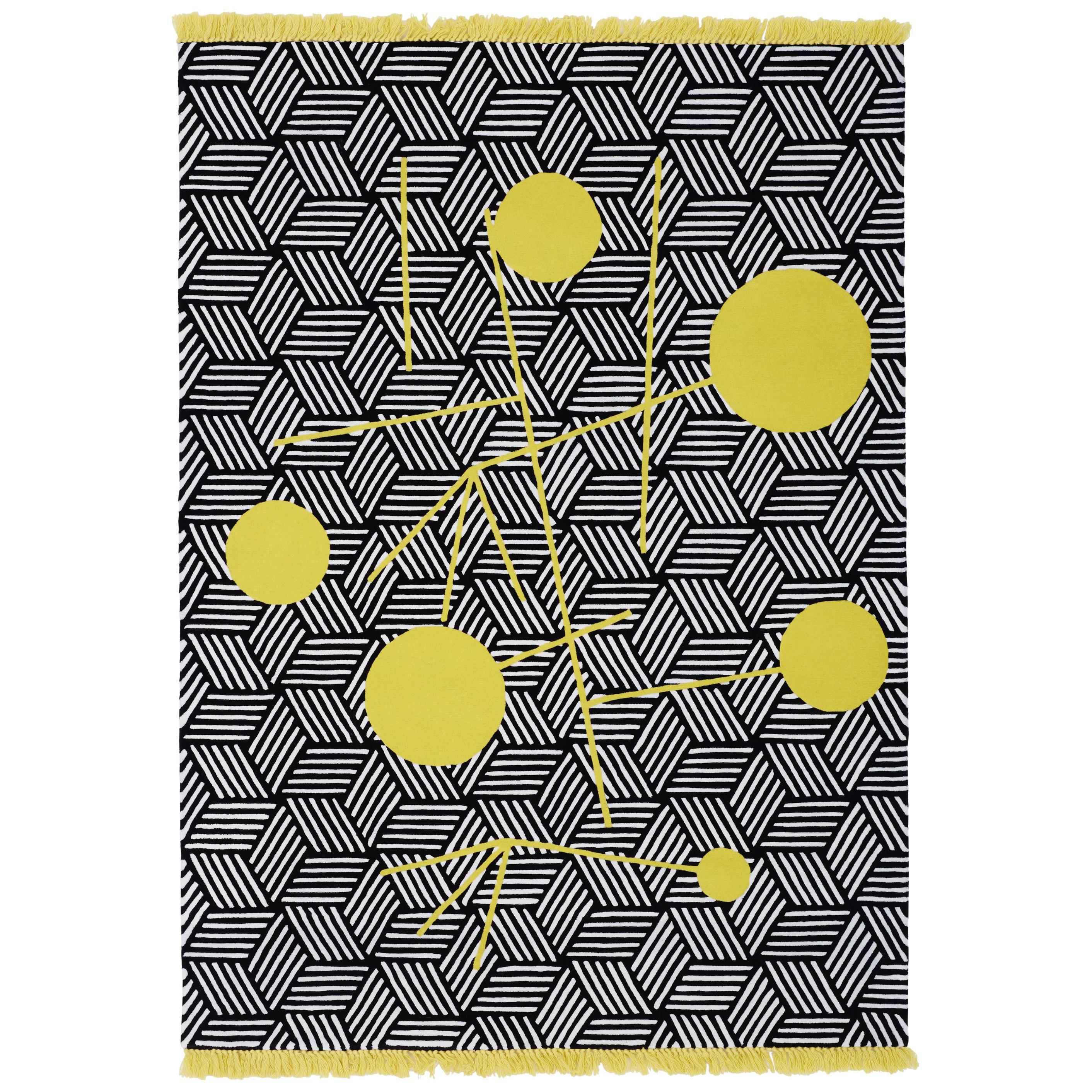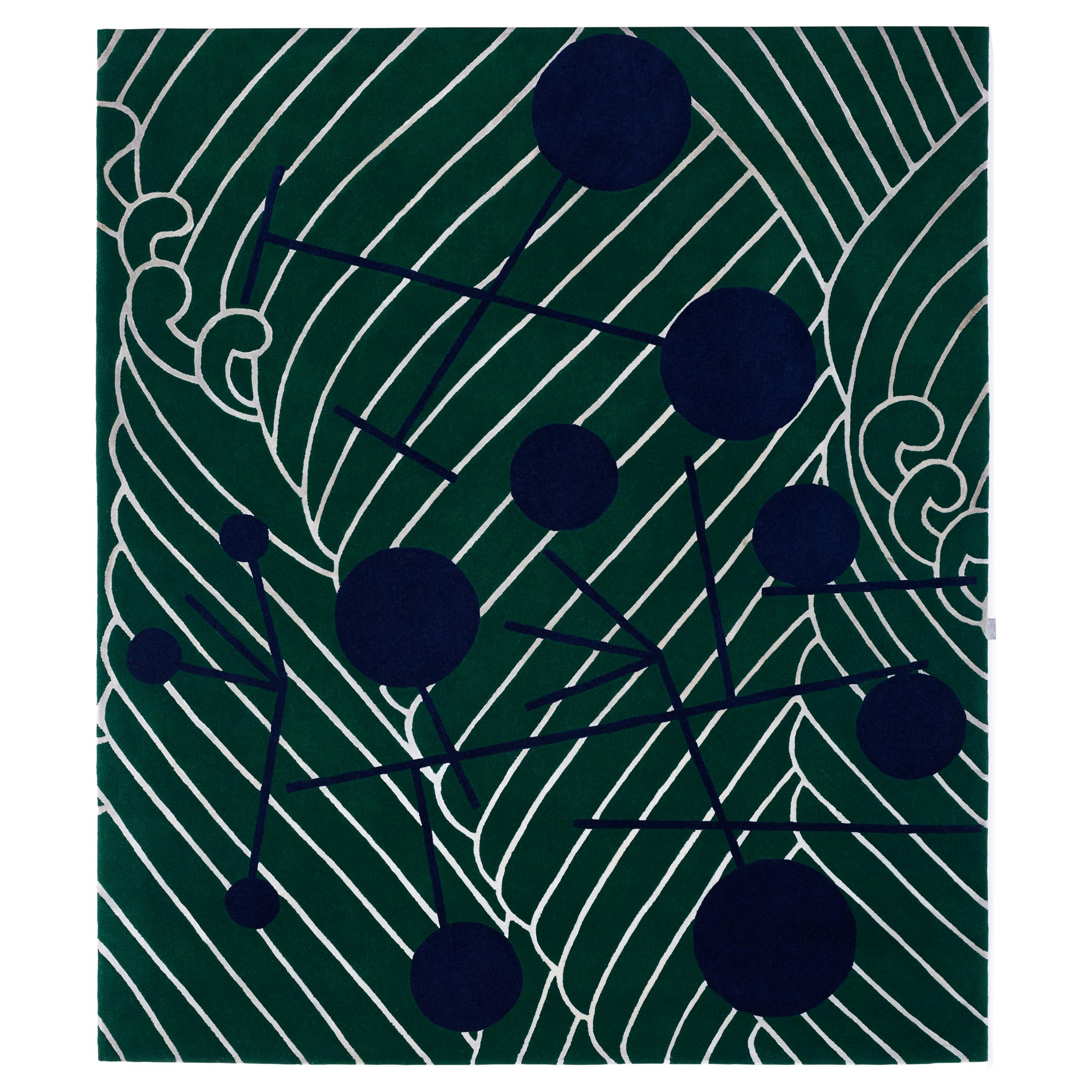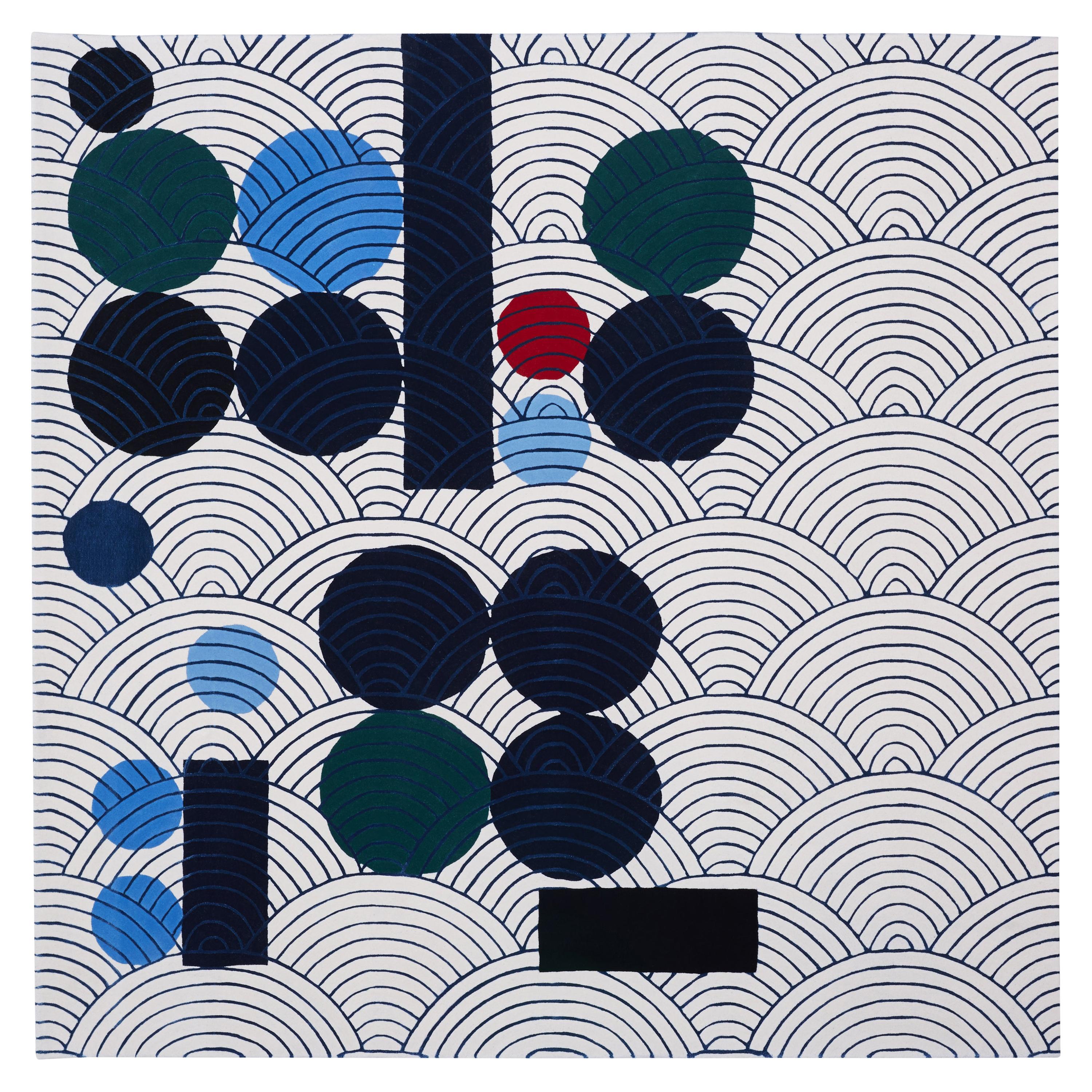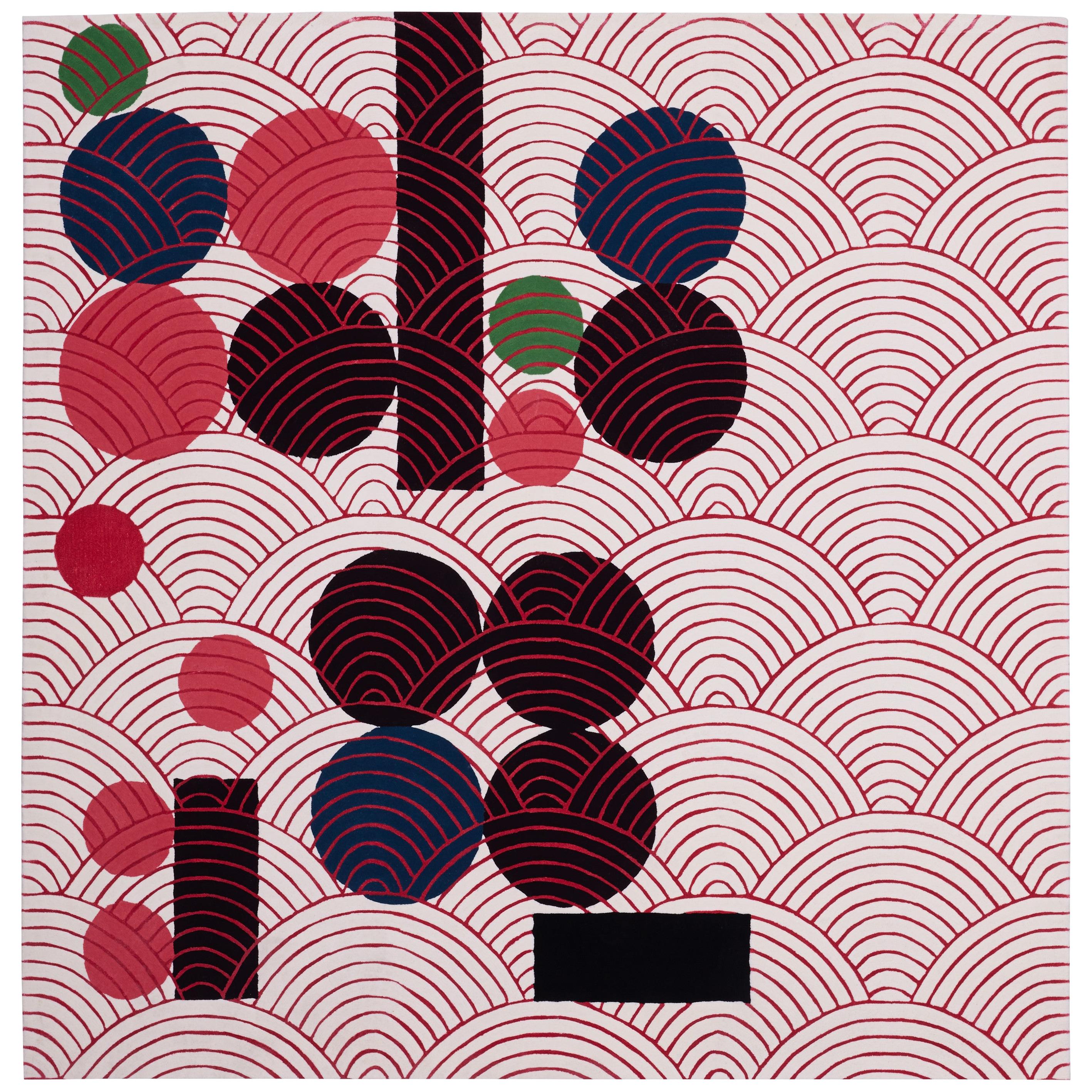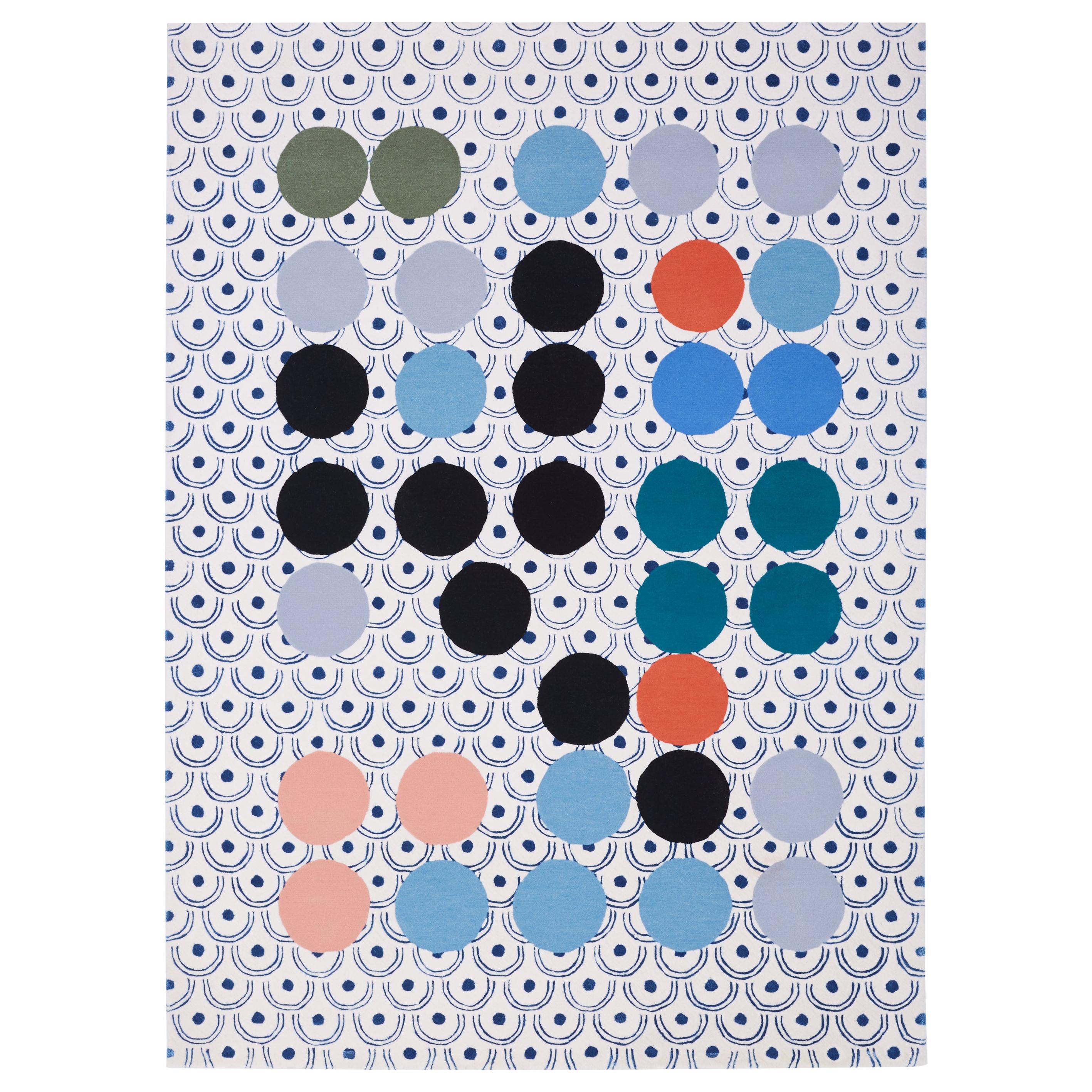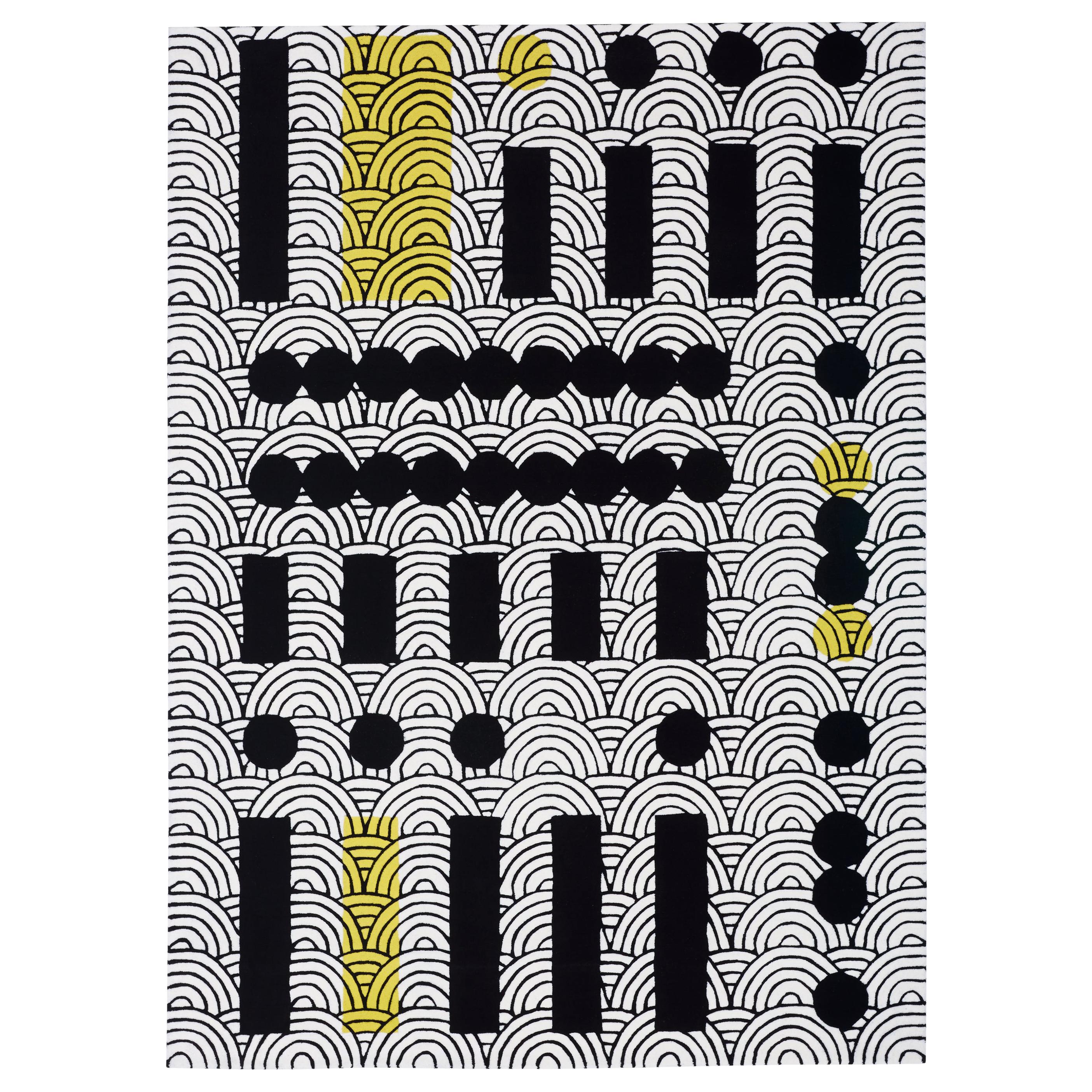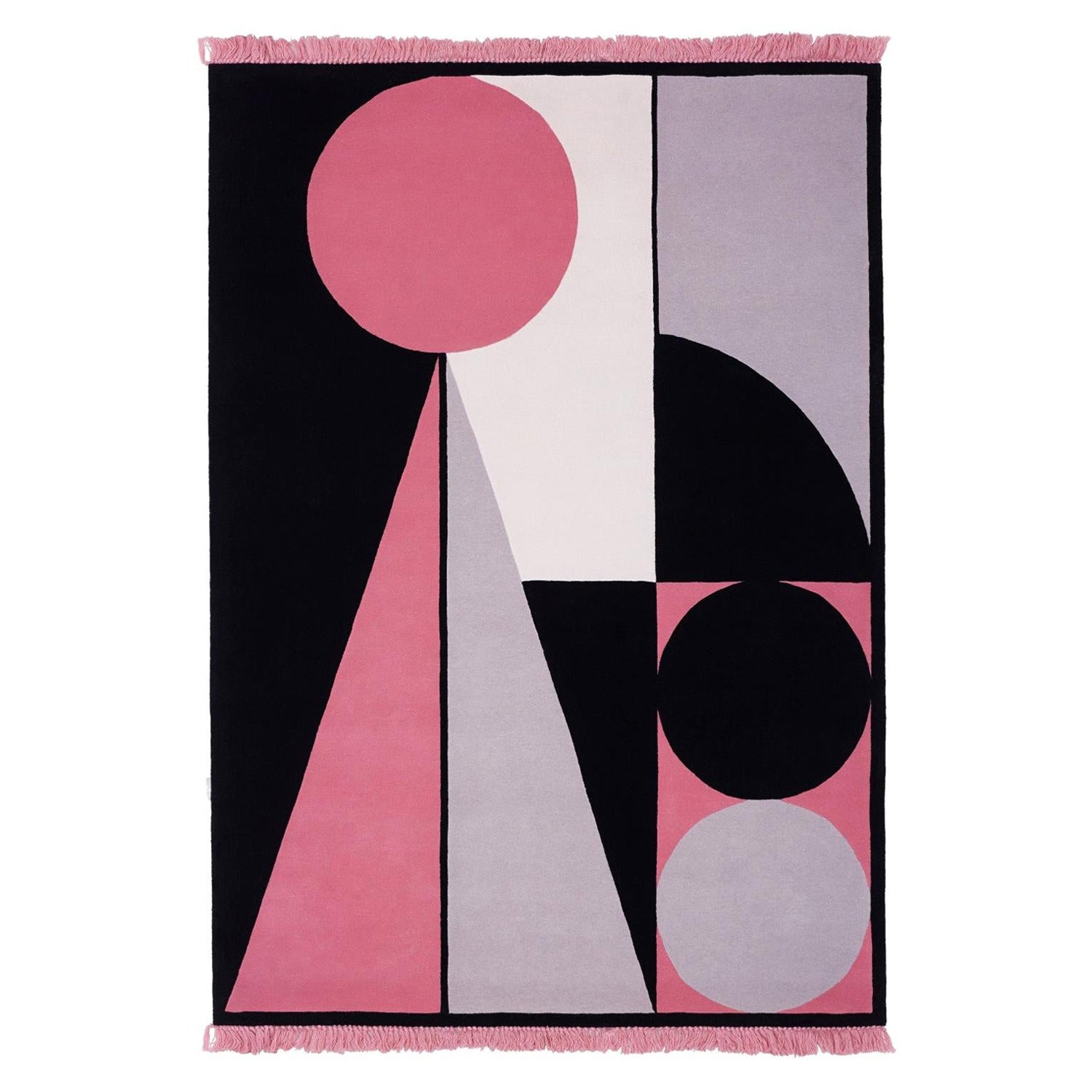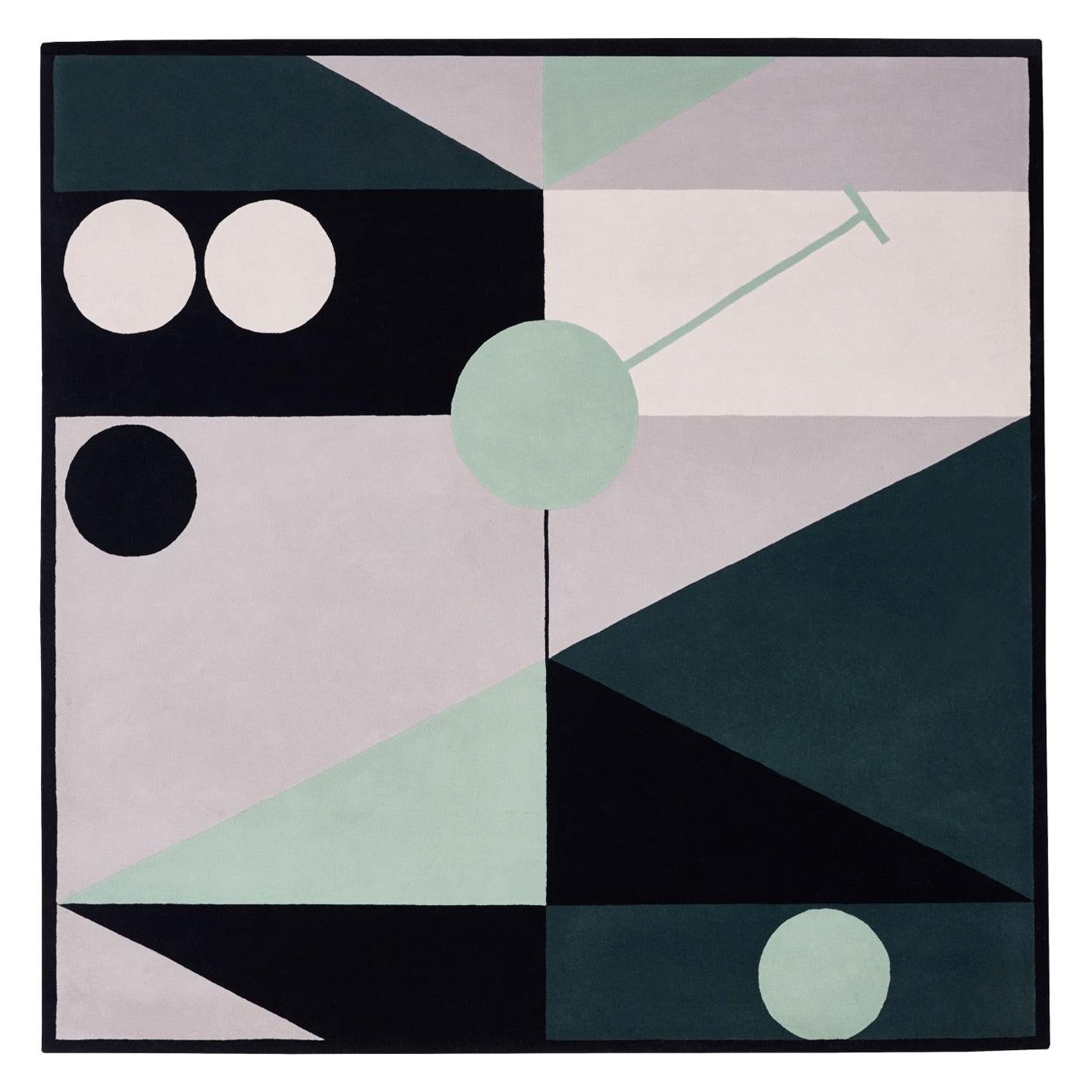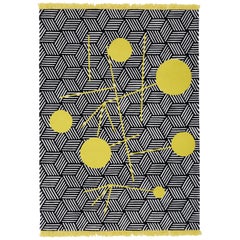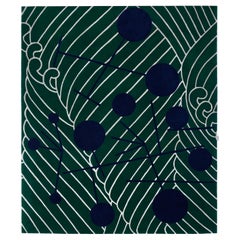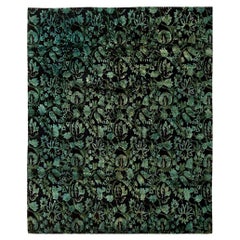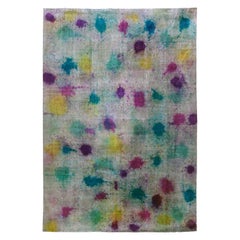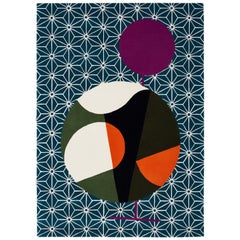
Abstract Dadaist Contemporary Rug Inspired by Sophie Taeuber Arp
View Similar Items
Want more images or videos?
Request additional images or videos from the seller
1 of 20
Abstract Dadaist Contemporary Rug Inspired by Sophie Taeuber Arp
About the Item
- Dimensions:Width: 66.93 in (170 cm)Length: 94.49 in (240 cm)
- Style:Modern (Of the Period)
- Materials and Techniques:
- Place of Origin:
- Period:
- Date of Manufacture:2020
- Production Type:New & Custom(Current Production)
- Estimated Production Time:11-12 weeks
- Condition:
- Seller Location:Geneve, CH
- Reference Number:1stDibs: LU1219218983182
Galerie Philia
Galerie Philia is an international contemporary sculptural design and art gallery representing emerging and established designers and artists. The gallery is the brainchild of two brothers who share a lifetime passion for art, literature and philosophy. Their distinct academic background sets them apart from their peers, as it sees them following a rhizomatic and transcultural approach in the way they select works. This involves combining elements from multiple cultures in what becomes a network of harmoniously interconnected roots, ultimately revealing the beauty of each unique creation. The gallery’s non-hierarchical curation sits apart from the ephemerality of trends and focuses instead on the true aesthetic quality of the piece – alluring and timeless. Unlike others, Galerie Philia does not focus on a single style – whether minimalist, organic or raw – but rather embraces heterogeneity. The Galerie Philia takes pride in discovering new talents, providing them with multiple international platforms to showcase their latest creations. As well as propelling the newest generation of 21st century collectible design, Galerie Philia also works with internationally known design artists. Galerie Philia has a strong international presence, with galleries in Geneva, New York and Singapore. In addition to their permanent spaces, the gallery organizes temporary group exhibitions and artists residencies in first-class locations around the world.
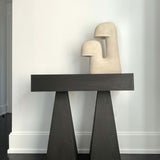
About the Seller
5.0
Diamond Seller
These expertly vetted sellers are 1stDibs' most experienced sellers and are rated highest by our customers.
Established in 2015
1stDibs seller since 2015
4,101 sales on 1stDibs
More From This SellerView All
- Abstract Dadaist Contemporary Rug Inspired by Sophie Taeuber ArpLocated in Geneve, CHAbstract Dadaist contemporary rug inspired by Sophie Taeuber Arp. Artist: Sophie Taeuber Arp Dimensions: W 170, D 240 cm New-Zealand wool and silk. Japanese Abstractions is a collection of nine pieces, all designed around the concept of the imaginary trip to Japan of the Dadaist and feminist artist Sophie Taeuber Arp. Each rug is a combination of geometric shapes and traditional Japanese patterns, a result of the unexpected yet poetic encounter between pure abstraction and cultural influences, between West and East. Sophie Taeuber-Arp Biography (1889–1929) Sophie Henriette Gertrud Taeuber was born on January 19, 1889 in Davos-Platz, Switzerland. From 1904 to 1907 she attended the Stauffacher-Schule and the drawing school at the Industrie- und Gewerbemuseum, or the museum for industry and design, in St. Gallen. In 1910 she began her studies at the Lehr- und Versuchsateliers für angewandte und freie Kunst in Munich, a reformed art school that sought to synthesize the visual and applied arts. After an additional semester at the school of applied arts in Hamburg in 1914, her student days came to an end. She joined the Schweizerischer Werkbund in 1915, the same year that she met Hans Arp. Enthused about her work, he encouraged her to devote herself to it even more fully. The artists’ close collaboration resulted in collages, sculptures and textile designs. Sophie Taeuber took lessons in movement arts from Rudolf von Laban, a founder of modern dance. She appeared as a dancer at the Dada-Soirées at the Cabaret Voltaire and the Galerie-Dada. Later on, she choreographed her own pieces. On May 5, 1916, she took over the textile class at the applied arts school in Zurich. In 1918, she also became a member of the artist’s association Das Neue Leben (New Life). At the same time, she undertook the design of stage backdrops and marionettes for Carlo Gozzi’s rendition of the opera König Hirsch. On October 20, 1922, she married Hans Arp. In 1925, Taeuber-Arp was appointed a member of the Swiss jury at the Exposition Internationale des Arts Décoratifs et Industriels in Paris. Her works won prizes and were shown in the International Exhibition of Modern Tapestries in Toledo, Ohio, USA. Sophie Taeuber-Arp and Hans Arp became French citizens in 1926. Through her connections with the Horn brothers, she secured contracts to design the interiors for various buildings, including the Aubette in Strasbourg. In turn, she asked Hans Arp and Theo van Doesburg to collaborate with her on this large scale project. Around the same time, she had a studio-home built according to her own plans in Clamart, near Paris. Having left her teaching post in Switzerland in 1929, Sophie Taeuber-Arp settled permanently in France. In collaboration with Marcel-Eugéne Cahen, she also realized the renovation and redesign of the Parisian Galerie Goemans. Sophie Taeuber-Arp Biography (1930–1943) In Paris, Sophie Taeuber-Arp joined the artists’ group Cercle et Carré and participated in their exhibitions. In 1931 she became a member of the association Abstraction-Création. Her artist friends Theodor and Woty Werner hired her to design the interior of their Paris apartment. A year later, in 1932, she left the Schweizerischer Werkbund. Her visit to the Sztuki Museum in Lodz, which was facilitated by Jan Brzekowski, led to a fruitful artistic exchange between the Polish avant-garde association a.r. and the Parisian artist’s group Abstraction-Création. Sophie Taeuber-Arp participated in various group exhibitions, and often showed her work with Artistes Suisses at the Galerie Vavin and at the Kunsthalle Bern with Hans Arp, Kurt Seligmann, Hans Schiess, and many others. She designed the layout for Anatole Jakovskis’ book Hans Erni, Hans Schiess, Kurt Seligmann, S. H. Taeuber-Arp, Gerard Vulliamy in 1935. Theodor and Woty Werner helped her secure the commission to design the interior of the Bauhaus professor Ludwig Hilberseimer’s Berlin apartment. Her work was shown in the exhibition These, Antithese, Synthese at the Kunstmuseum Luzern and in 1936 in Zeitprobleme in der Schweizer Malerei und Plastik, an exhibition of contemporary Swiss painting and sculpture, at the Kunsthaus Zürich. Additionally, she participated in the Konstruktivisten-Ausstellung, an exhibition of constructivist art, at the Kunsthalle Basel. Sophie Taeuber-Arp founded the international artists’ journal plastique with César Domela, A. E. Gallatin and L. K. Morris in 1937. The same year she joined the Swiss artists’ group Allianz. In 1938, she exhibited at the Exposition internationale du Surréalisme in Paris and at the Exposition of Contemporary Sculpture in London...Category
2010s New Zealand Modern Western European Rugs
MaterialsWool
- Abstract Dadaist Contemporary Rug Inspired by Sophie Taeuber ArpLocated in Geneve, CHAbstract Dadaist Contemporary rug inspired by Sophie Taeuber Arp Artist: Sophie Taeuber Arp Dimensions: W 170 x D 240 cm New Zealand wool and silk Ja...Category
2010s New Zealand Modern Western European Rugs
MaterialsWool
- Abstract Dadaist Contemporary Rug Inspired by Sophie Taeuber ArpLocated in Geneve, CHAbstract Dadaist Contemporary rug inspired by Sophie Taeuber Arp Artist: Sophie Taeuber Arp Dimensions: W 170 x D 240 cm New-Zealand wool and silk Ja...Category
2010s New Zealand Modern Western European Rugs
MaterialsWool
- Abstract Dadaist Contemporary Rug Inspired by Sophie Taeuber ArpLocated in Geneve, CHAbstract Dadaist contemporary rug inspired by Sophie Taeuber Arp Artist: Sophie Taeuber Arp Dimensions: W 170, D 240 cm New-Zealand wool and silk Japanese Abstractions is a collection of nine pieces, all designed around the concept of the imaginary trip to Japan of the Dadaist and feminist artist Sophie Taeuber Arp. Each rug is a combination of geometric shapes and traditional Japanese patterns, a result of the unexpected yet poetic encounter between pure abstraction and cultural influences, between West and East. SOPHIE TAEUBER-ARP Biography (1889–1929) Sophie Henriette Gertrud Taeuber was born on January 19, 1889 in Davos-Platz, Switzerland. From 1904 to 1907 she attended the Stauffacher-Schule and the drawing school at the Industrie- und Gewerbemuseum, or the museum for industry and design, in St. Gallen. In 1910 she began her studies at the Lehr- und Versuchsateliers für angewandte und freie Kunst in Munich, a reformed art school that sought to synthesize the visual and applied arts. After an additional semester at the school of applied arts in Hamburg in 1914, her student days came to an end. She joined the Schweizerischer Werkbund in 1915, the same year that she met Hans Arp. Enthused about her work, he encouraged her to devote herself to it even more fully. The artists’ close collaboration resulted in collages, sculptures and textile designs. Sophie Taeuber took lessons in movement arts from Rudolf von Laban, a founder of modern dance. She appeared as a dancer at the Dada-Soirées at the Cabaret Voltaire and the Galerie-Dada. Later on, she choreographed her own pieces. On May 5, 1916, she took over the textile class at the applied arts school in Zurich. In 1918, she also became a member of the artist’s association Das Neue Leben (New Life). At the same time, she undertook the design of stage backdrops and marionettes for Carlo Gozzi’s rendition of the opera König Hirsch. On October 20, 1922, she married Hans Arp. In 1925, Taeuber-Arp was appointed a member of the Swiss jury at the Exposition Internationale des Arts Décoratifs et Industriels in Paris. Her works won prizes and were shown in the International Exhibition of Modern Tapestries in Toledo, Ohio, USA. Sophie Taeuber-Arp and Hans Arp became French citizens in 1926. Through her connections with the Horn brothers, she secured contracts to design the interiors for various buildings, including the Aubette in Strasbourg. In turn, she asked Hans Arp and Theo van Doesburg to collaborate with her on this large-scale project. Around the same time, she had a studio-home built according to her own plans in Clamart, near Paris. Having left her teaching post in Switzerland in 1929, Sophie Taeuber-Arp settled permanently in France. In collaboration with Marcel-Eugéne Cahen, she also realized the renovation and redesign of theParisian Galerie Goemans. SOPHIE TAEUBER-ARP Biography (1930–1943) In Paris, Sophie Taeuber-Arp joined the artists’ group Cercle et Carré and participated in their exhibitions. In 1931 she became a member of the association Abstraction-Création. Her artist friends Theodor and Woty Werner hired her to design the interior of their Paris apartment. A year later, in 1932, she left the Schweizerischer Werkbund. Her visit to the Sztuki Museum in Lodz, which was facilitated by Jan Brzekowski, led to a fruitful artistic exchange between the Polish avant-garde association a.r. and the Parisian artist’s group Abstraction-Création. Sophie Taeuber-Arp participated in various group exhibitions, and often showed her work with Artistes Suisses at the Galerie Vavin and at the Kunsthalle Bern with Hans Arp, Kurt Seligmann, Hans Schiess, and many others. She designed the layout for Anatole Jakovskis’ book Hans Erni, Hans Schiess, Kurt Seligmann, S. H. Taeuber-Arp, Gerard Vulliamy in 1935. Theodor and Woty Werner helped her secure the commission to design the interior of the Bauhaus professor Ludwig Hilberseimer’s Berlin apartment. Her work was shown in the exhibition These, Antithese, Synthese at the Kunstmuseum Luzern and in 1936 in Zeitprobleme in der Schweizer Malerei und Plastik, an exhibition of contemporary Swiss painting and sculpture, at the Kunsthaus Zürich. Additionally, she participated in the Konstruktivisten-Ausstellung, an exhibition of constructivist art, at the Kunsthalle Basel. Sophie Taeuber-Arp founded the international artists’ journal plastique with César Domela, A. E. Gallatin and L. K. Morris in 1937. The same year she joined the Swiss artists’ group Allianz. In 1938, she exhibited at the Exposition internationale du Surréalisme in Paris and at the Exposition of Contemporary Sculpture in London...Category
2010s New Zealand Modern Western European Rugs
MaterialsWool
- Abstract Dadaist Contemporary Rug Inspired by Sophie Taeuber ArpLocated in Geneve, CHAbstract Dadaist contemporary rug inspired by Sophie Taeuber Arp Artist: Sophie Taeuber Arp Dimensions: W 170 x D 240 cm New Zealand wool and silk ...Category
2010s New Zealand Modern Western European Rugs
MaterialsWool
- Abstract Dadaist Contemporary Rug Inspired by Sophie Taeuber ArpLocated in Geneve, CHAbstract Dadaist contemporary rug inspired by Sophie Taeuber Arp Artist: Sophie Taeuber Arp Dimensions: W 170 x D 240 CM New-Zealand wool and silk Ja...Category
2010s New Zealand Modern Western European Rugs
MaterialsWool
You May Also Like
- Contemporary Floral European Inspired Tibetan Rug by Doris Leslie BlauLocated in New York, NYContemporary floral green and black European inspired Tibetan rug by Doris Leslie Blau. Size: 7'10" × 9'7" (238 × 292 cm). What we are offering this time is a magnificent piece of we...Category
21st Century and Contemporary Tibetan Tibetan Western European Rugs
MaterialsWool, Silk
- Contemporary Cubist Inspired Handmade Silk and Wool Rug by Doris Leslie BlauLocated in New York, NYContemporary Cubist Inspired Handmade Silk and Wool Rug by Doris Leslie Blau Size: 11'7" × 14'0" (353 × 426 cm) While looking at this contemporary carpet, it’s easy to mistake it for...Category
21st Century and Contemporary Indian Modern Western European Rugs
MaterialsWool, Silk
- Contemporary Abstract Daliesque Handmde Wool Rug by Doris Leslie BlauLocated in New York, NYContemporary Abstract Daliesque handmde wool rug by Doris Leslie Blau Size: 7'10" × 11'7" (238 × 353 cm). Who has not heard of the one and only Salvador Dali? His quirky genius con...Category
21st Century and Contemporary Turkish Modern Western European Rugs
MaterialsWool
- Contemporary Abstract Daliesque Handmade Wool Rug by Doris Leslie BlauLocated in New York, NYContemporary abstract Daliesque handmade wool rug by Doris Leslie Blau Size: 6'4" × 14'2" (193 × 431 cm). Salvador Dali changed the world with his bold paintings and untamable genius...Category
21st Century and Contemporary Turkish Modern Western European Rugs
MaterialsWool
- European Inspired Aubusson Rug by Doris Leslie BlauLocated in New York, NYEuropean inspired aubusson rug by Doris Leslie Blau. Size: 9.0" × 12.0" (274 × 365 cm). This European-inspired area rug exhibits a genuinely palatial elegance. Although made in the 21st century, the carpet comprises all the best features of traditional Aubusson weaving art.Category
21st Century and Contemporary Chinese Aubusson Western European Rugs
MaterialsWool
- Traditional European Inspired Beige Handmade Rug by Doris Leslie BlauLocated in New York, NYTraditional European inspired beige handmade rug by Doris Leslie Blau. Size: 11'7" × 22'3" (353 × 678 cm). This contemporary rug inspired by traditional European design is hand-kno...Category
21st Century and Contemporary Tibetan Modern Western European Rugs
MaterialsSilk
Recently Viewed
View AllRead More
Galerie Philia Unveils Limited-Edition Designs at Giampiero Tagliaferri’s New L.A. Studio
For the exhibition “Materia Perpetua,” the gallery asked an international group of makers — including Tagliaferri — to explore the possibilities of a surprisingly versatile material: onyx.
Galerie Philia Doesn’t Just Discover Fresh Design Talent — It Grows It
With an impressive slate of international exhibitions, the Geneva-based gallery raises the profiles of emerging designers.

